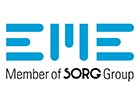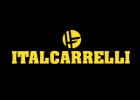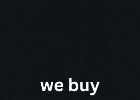The pressure makes the difference
With "LamiPress" machines, even complex laminated safety glass (LSG) made of toughened safety glass, multilayer laminates, switchable glass, fire-resistant and vacuum glass can be laminated quickly and economically to the highest quality. The energy input is only 10 kW/h per square metre of laminated safety glass because the process chamber is significantly smaller than in an autoclave, and the cycle time from 45 minutes is extremely short compared to the approximately six-hour process in an autoclave. How is this technically possible, what makes the LamiPress different from autoclave-free laminators, which often struggle with high failure rates and quality problems? The answer is: it is a completely unique technology in which a globally patented overpressure process makes the difference. We explain how it works.
In its basic configuration, a LamiPress consists of the actual process room with connected control, heating and cooling, a transfer table with transfer plate and an open-air cooler for final post-cooling. To produce laminates, the first step is to combine glass and film in the clean room, trim the film to the final dimensions and fix the resulting "packets" with adhesive tape. The packets are then placed on the transfer plate using a vacuum manipulator and covered with the vacuum mat. The cold vacuum process then takes place outside the cleanroom: the air between the glass packets on the transfer plate and the vacuum mat is "sucked out". The transfer plate is now moved into the process area of the LamiPress with the glass packs lying firmly under the vacuum mat, where it is placed on a "heating plate". The upper frame of the LamiPress is now lowered until the process chamber is hermetically sealed. A bellows system is now inflated in the interior, which presses the heating plate and the transfer plate against the frame and introduces pneumatic overpressure into the process chamber. The heating and cooling process then starts, during which the temperature, pressure and vacuum are automatically adjusted to the product. Once lamination is complete, which takes between 45 and 120 minutes depending on the configuration, the finished laminated safety glass on the transfer plate moves out of the opening process chamber and can be removed. No reworking of the edges is necessary. The transfer plate is then fed back into the material flow and is available for the next laminates.
With LamiPress machines, glass processors no longer have to build error-prone vacuum bags and are not blocked on the pre-lamination line designed for mass production. In addition to the standard models, Fotoverbundglas Marl designs machines according to individual requirements, from the small laboratory scale to the jumbo line for glass in ribbon dimensions - or even larger. In the course of many years of cooperation with Kuraray (Trosifol and Sentryglas films) and Eastman (Saflex and Vanceva films), the overprinting process of the systems has been perfected for any dimension and is now the most reliable process on the market. Even special films with bird protection properties, switchable films, GIPV modules or vacuum glass with PVB and Sentryglas films can be laminated without any problems.
More information about the LamiPress and how it works can be found at www.lami-press.de, where you can even watch descriptive videos or send your questions to info@lami-press.de.
LamiPress: Innovative machine technology
glassglobal Community
, © Fotoverbundglas



























